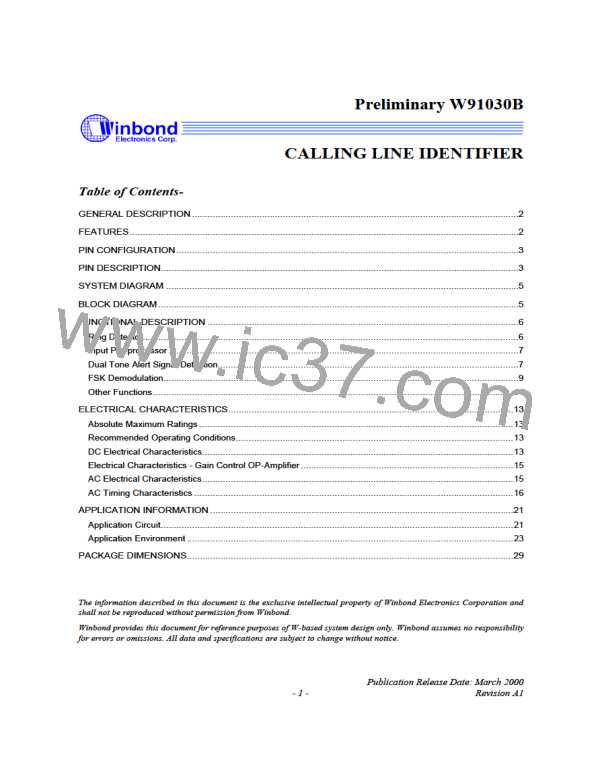Preliminary W91030B
CPE unmutes handset
and enables keypad
CPE goes off-hook
Start Point
CPE mutes handset & disables keypad
CPE sends
Tip/Ring
Note 1
Alert Signal
ACK
D
Mark
Message
A
B
C
E
F
G
H
Note 6
Note 3
SLEEP
INTN
...
tREC
tABS
ALGO
FSKE
Note 4
Note 5
Note 2
FCDN
FDRN
...
DCLK
DATA
Data
Figure 9-6. Input and Output Timing of BT Loop State (Off-hook) Data Transmission
-
-
B = 80 85 mS
A = 40 50 mS
£
-
D = 65 75 mS
C = 100 mS
-
-
F = 45 75 mS
E = 5 100 mS
£
100 mS
G = Depends on data length
H
Notes:
1. In a CPE where AC power is not available, the designer may choose to switch over to line power when the CPE goes off-hook and
use battery power while on-hook.
2. The FSKE pin may be set low to prevent the alert tone, speech or other FSK inband noise decoded by FSK demodulator and
give false data when the dual tone alert signal is expected. If the FSKE pin can not controlled by microcontroller, the FSKE pin
must always placed in high state and the microcontroller must give up the FSK decoded data when the FSK signal is not
expected.
3. The exchange will have already disabled the speech path to the distant customer in both transmission directions.
4. The FSKE should be set high as soon as the CPE has finished sending the acknowledge signal ACK.
5. The FSKE may be set low after the last byte (check sum) has been decoded or FCDN has become inactive.
6. In unsuccessful attempts where the exchange does not send the FSK signal, the CPE should disable FSKE, unmute the
handset and enable the keypad after this interval.
Publication Release Date: March 2000
- 27 -
Revision A1

 WINBOND [ WINBOND ]
WINBOND [ WINBOND ]